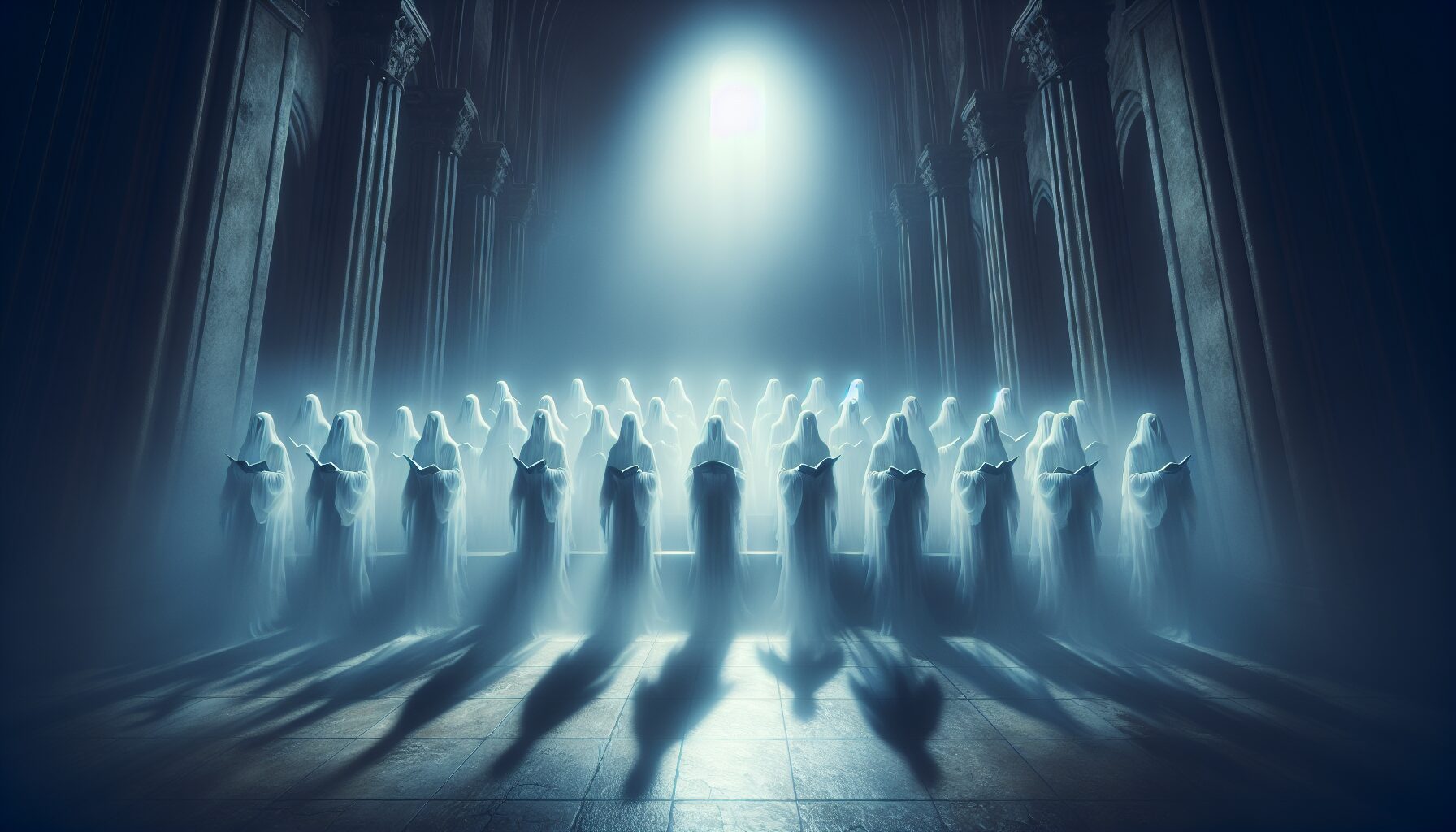In the depths of time and memory, where the veil between this world and the next grows thin, whispers of ancient souls create a symphony of echoes. This ethereal harmony, known as The Silent Choir, speaks to those attuned to the mystical side of existence, offering insights into forgotten histories and spiritual truths.
Origins of the Silent Choir
The Silent Choir is a concept found in various cultural traditions around the world, each with its unique interpretation. Some believe these echoes are the voices of ancestors guiding the living, while others view them as cosmic harmonies that sustain the universe. Despite their cultural differences, these traditions share a common belief in the power of soundless voices to influence the physical and spiritual realms.
In ancient Celtic lore, the Druids were believed to communicate with the spirits of the land through The Silent Choir. They taught that these whispers carried the wisdom of nature, accessible to those who cultivated deep stillness and reverence. Similarly, in the indigenous spiritual practices of North America, the concept of the spirit voice is present, where ancestral spirits imbue the land with sacred energy and guidance.
The Science Behind the Echoes
The idea of hearing echoes of the past might initially seem far-fetched. However, emerging studies in the field of psychoacoustics suggest that sound and memory are intricately linked. According to Dr. Chris Kyriakakis of the University of Southern California, “The brain can recreate auditory environments, making it possible to hear non-existent sounds based on memory or expectation” (Journal of Acoustics).
This scientific perspective doesn’t negate the mystical aspects, but rather provides a framework for understanding how individuals might perceive these spectral symphonies. It suggests a genuine connection between the physiological and metaphysical experiences of these echoes.
Experiencing the Silent Choir
For those who seek to hear The Silent Choir, the practice of deep listening is crucial. This involves more than merely hearing; it requires an open heart and a reflective mind. Below are steps to begin your journey:
- Create Stillness: Find a quiet place, free from disturbances, where you can focus your mind and senses.
- Mindful Breathing: Inhale and exhale slowly, allowing your breath to guide you into a meditative state.
- Attuned Awareness: Pay attention to the subtlest sounds, the faintest whispers, and the silence in between.
- Reflective Contemplation: Consider what these echoes, or the absence thereof, might be conveying about your spiritual path.
As you deepen your practice, you may begin to discern patterns or messages within the silence—insights into past experiences or intuitive guidance about current decisions.
The Impact of the Silent Choir
The Silent Choir is revered not only for its spiritual messages but also for its healing properties. Listening to these mystical echoes can foster emotional resilience, reduce stress, and promote a deeper connection with one’s self and the universe. A study by Harvard Medical School suggests that meditation practices, similar to those described, significantly enhance psychological well-being (Harvard Health Publishing).
Practitioners often report a sense of unity with the universe, finding peace in the affirmation that they are a part of something greater—a timeless choir of souls singing in harmony.
Conclusion
In a world dominated by noise and distraction, The Silent Choir offers a sanctuary of serenity. These mystical echoes, whether understood through spiritual narratives or scientific inquiry, testify to the rich tapestry of human experience that transcends the material world. By listening deeply, we honor the voices of the past, bringing their wisdom into the present to guide our future.
“Silence is a source of great strength.”
— Lao Tzu
Let us embrace the silence, listen to its secrets, and join the ceaseless choir of the forgotten spirits.

Comments